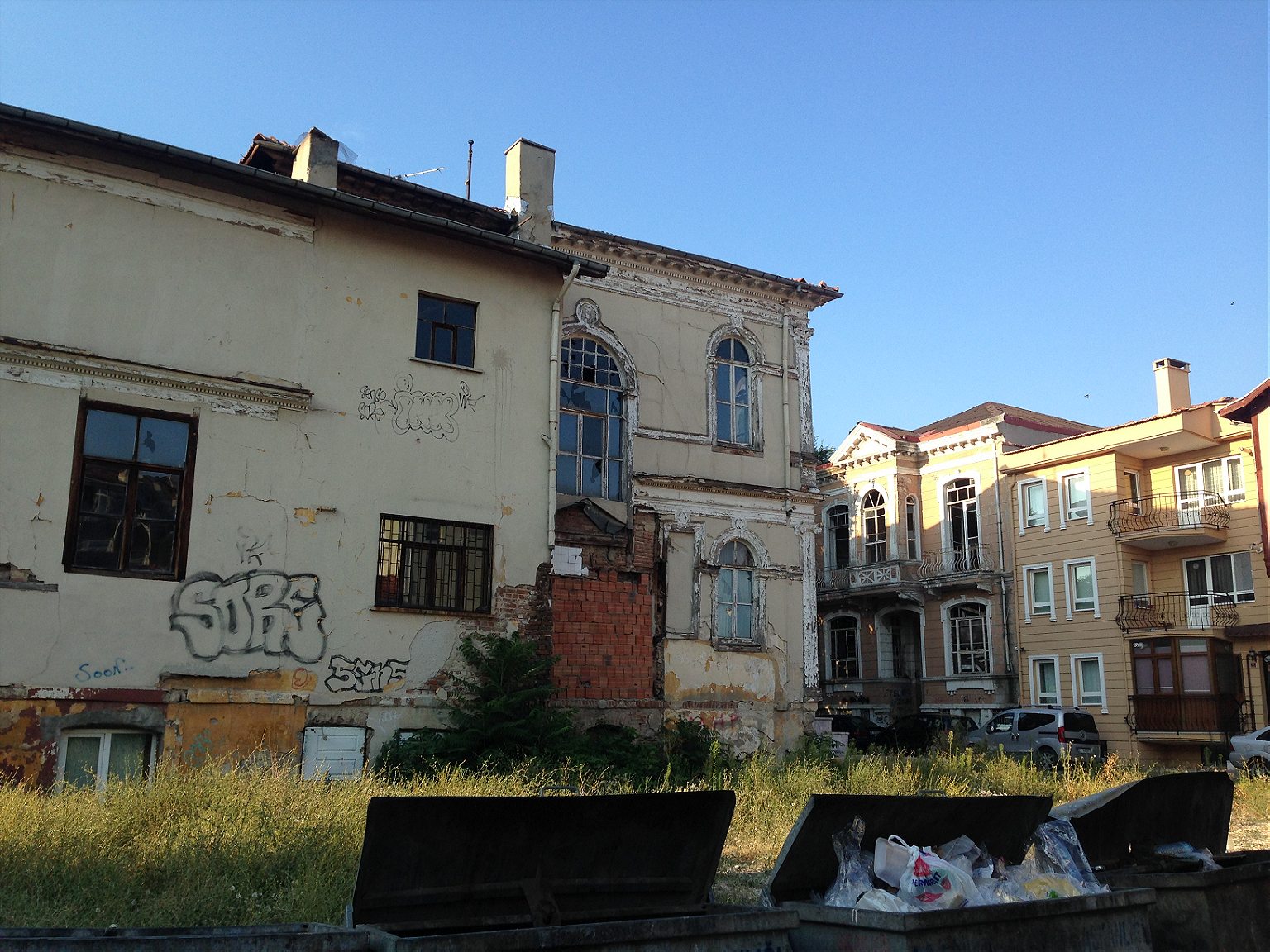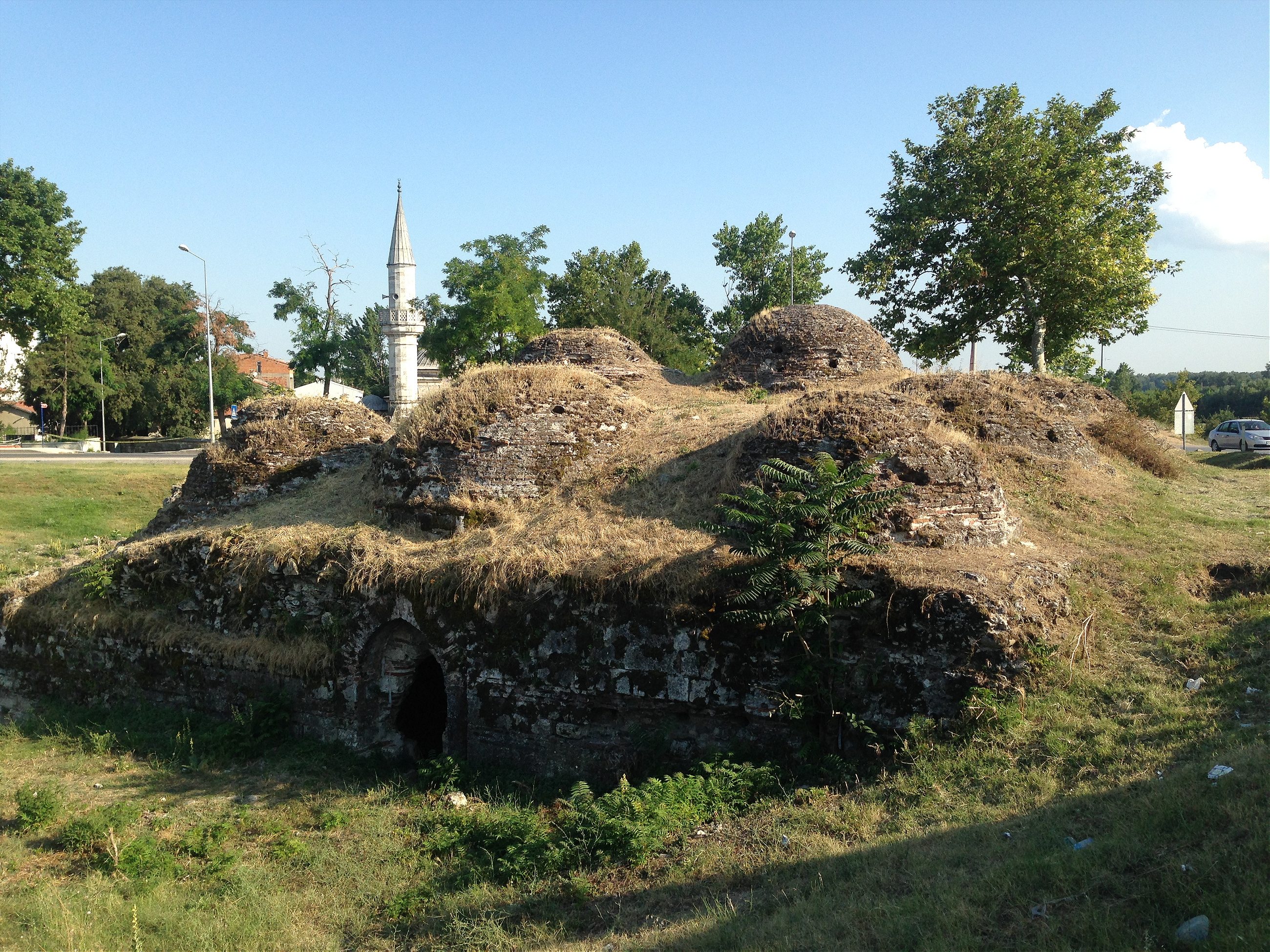The Syrian civil war has turned Erdine, Turkey, back into the waystation for refugees that it was nearly a century ago.
EDIRNE, Turkey—
Five miles from the promised land, there’s everything a migrant might need: rental car agencies that provide their own drivers; a cheap place to spend the night biding time; pay-as-you-go cellphones; and a chicken doner in perpetual motion. Edirne isn’t big, and most tourist guides highlight a gorgeous mosque and the locals’ penchant for fried liver. But those guides ignore Edirne’s greatest advantage for innumerable visitors: It’s five miles to Greece, the European Union, and potential refugee status. Edirne is the last stop before Europe.
The United Nations estimates that more than 6 million Syrians are displaced—nearly a third of the population. An incredible 2 million of these individuals are in Turkey, and an untold number of them are trying to make their way to Europe, where, to hear them say it, the streets are paved in gold. The streets are just asphalt in this northwest corner of Turkey, but all roads to Europe go through Edirne. From a historian’s perspective, they always have.
“Edirne is like a gun,” the writer Ismail Keskin says, describing the city of 150,000 people. “It gets loaded with refugees, and then shoots them everywhere.”
Refugees from Syria aren’t considered part of Turkishness
Keskin is a historian and a novelist, and he tries to explain how Syrian refugees fit into the region’s migration history. He’s a good person to do so, since he just published a novel about a Syrian family’s flight through Edirne, called The Exile of the Cactus Flower. Balding, with a grad student’s beard, Keskin talks over a frappe. It’s an affectation he picked up in Greece, where he was studying the 1923 population exchange that uprooted as many as 500,000 Greek Muslims from their homeland and brought them to Turkey, where few spoke the language or knew the customs.
Unlike those who came a century ago, “refugees from Syria aren’t considered as being part of Turkishness,” Keskin says. “They have never been considered as the ones who have a right to claim their part.” In the early 1900s, nearly a million Muslims fled the new Balkan nation-states for Turkey. Known as muhacir in Turkish, thousands died of starvation, and at the hands of lynch mobs and bandits on their way to Edirne and all points south. But they were fortunate, in a way, since they were fleeing to a Turkey still defining what “Turkishness” meant. The Turkish language hadn’t been standardized yet; decades of war had the grotesque effect of giving these Balkan migrants job opportunities; a revolutionary education system would forge their children into Turks.

Coinciding with this Balkan exodus was the Arab Revolt against the Ottoman Empire. Though it’s remembered heroically in Syrian history, the architects of the Turkish state saw it as betrayal. It should be old history by now, but as Keskin puts it, Turkish textbooks portray the Arabs “as a dirty, ignorant, uncivilized, non-trustable back-stabber nation.” Edirne’s people, the vast majority of whom trace their roots to these Balkan refugees, see themselves as “Sons of the Conquerors,” as a popular nationalist saying goes. The Syrians are seen as the sons of the perfidious.
This may be why Syrians are less visible in Edirne than they are in far larger Istanbul. According to Keskin, the 2 million Syrians in Istanbul, in refugee camps, and in southern Turkey are largely here to stay. In Edirne, they’re only there to leave.
The cluster of pensions, phone shops, and car agencies sits on Edirne’s far western edge, on the way out of town. There are underclothes, boxers, and socks hanging out of many pension windows, which gives the area a peculiar look of having a transient camp occupy permanent space. The Syrians are mostly 20 to 30 years old and spend their time either in PlayStation cafés or dealing cards. Every so often a car comes up and a few men grab their duffel bags and hop in.

On a brutally hot and humid Saturday, a thickset man with a jet-black mustache wolf-whistles an alert when the rare police car cruises by. The atmosphere is less suspicious than pragmatic; there’s no use in anyone getting into any trouble so close to Europe. Greece is preferred, since it is in the EU’s Schengen Area of visa-free travel, but its border is shorter and better-policed than the broad plains of Bulgaria. Either way, nobody is talking about where they are off to or what they are up to. Photographs can only cause problems. As such, they are strongly frowned upon.
Two different places have Arabic signs. Both say “Restaurant” in Arabic, but one is a proper sit-down place without a Turkish name, only an English “Cash and Carry” on the awning. The other features two exhausted-looking Turks and one sad-looking chicken doner. There are only patrons at the second place. A pair of Syrian men help their young companion in a wheelchair eat some bread and chicken. With a goatee, blond hair, and a blue-eyed gaze, the father looks like an Ohio high school football coach. The other man just looks tired, and the boy in the wheelchair is enjoying the chicken. It is unclear where they are staying, but they aren’t around the next day.

There is clearly some support for the refugee community here in town. Edirne is famously more secular than most of Turkey, but at the teahouse there is talk of being “brother Muslims.” Wherever these Syrians are going in Europe, they will be relying on networks of fellow Syrians and religious foundations as much as state bureaucracies. If they end up in Germany or the Netherlands, they will likely pray at a mosque administered by the Turkish ministry of religious affairs if they choose to pray at all. The brotherhood being offered is both local and transnational.
This part of Edirne looks like it was hastily built circa 1955. The concrete buildings go up about six stories and create a funnel around the road out of town. Except for two mosques straddling the thin Tunca River, it is unrecognizable from photographs from the century before, when the road was full of refugees traveling in the other direction. West of the river, it doesn’t look unchanged at all, though that’s obviously not the case. The flat fields seem to be the sort of thing that horsemen once galloped on, tanks might pulverize, and families could sneak through, using its hedgerows as cover. Looking west, it seems suddenly rather arbitrary that the Meriç River is the border of Europe, instead of this thinner Tunca or the mighty Danube.
It also seems quite arbitrary that some grandchildren of Ottoman subjects are European citizens and others are Europe-bound refugees based on the political alliances their grandparents made. After World War I, Turkey was supposed to lose Edirne to the Greeks and Aleppo to the French. Turkish general Mustafa Kemal (soon to be Atatürk) demanded the return of the former but not the latter. Part of the deal was that Turkey would exchange its Christian population with Greece’s Muslim population, with some geographical exceptions.
Many of those Muslims put down roots in Edirne, as did their coreligionists from what is now Bulgaria. Their grandchildren are proud of these muhacir roots, but some of the proudest do not see any comparison between their ancestors’ flight and the Syrian issue.
Sami Gültekin, a local historian and founder of the Turkish-Bulgarian-Greek friendship association, stands tall in front of photographs of Muslim refugees from a century prior. Barely sweating from the humidity, he points to the photographs of road-weary migrants. “Look at what we had to deal with,” Gültekin says as he gestures at a photograph of two lynched men. “We had so much violence, and we have learned to forgive.” When asked if the intervening decades may have something to do with it, he shrugs. “The Syrians will not stay. They are just migrants.”

Defining migrant across the ages is difficult. The Balkan Wars were decades before the United Nations defined what refugees were, what refugees weren’t, and how the world would reckon with something like Syria’s civil war. Europe’s migrant crisis is fueled less by age-old rivalries than by unintended consequences. The most brilliant men of the early 1900s thought that their dismemberment of the Ottoman Empire would save future generations from war, but World War II, the Lebanese Civil War, and now Syria’s show that they are oh-for-three so far in that regard.
It may feel good to blame some long-dead gentlemen for current-day woes, but that does not precisely help the blond football coach–looking man or his companion in the wheelchair. Ismail Keskin has studied Turkey’s previous refugee crisis and written books about both that one and today’s. He doesn’t feel particularly hopeful, pointing to the refugee camps that dot the European continent and the horror stories that threaten to outweigh the successes: capsized boats off Lampedusa, bodies washed up on the Norwegian coast, a stampede in the Channel Tunnel.
Keskin’s book hinges on a harrowing journey across the Meriç River, and a Greek border guard’s memory of his own grandfather’s similar flight. They both knew Edirne only as a place worth getting away from. Surely it’s more than that, and the mosques are gorgeous. The people are friendly. The liver is tasty, if you are into that sort of thing. Edirne is a city of migrants, even if some have only been there for a few moments and others for generations. Some Syrians see it as a place where things can only go wrong, and that should be understandable.
Edirne has found itself a victim of historical circumstance, the last stop before the dream of a better life. Cities, like their inhabitants and like their visitors, must make the best of the situations they were born into. People can leave, but Edirne can only make itself an OK place to stay.
